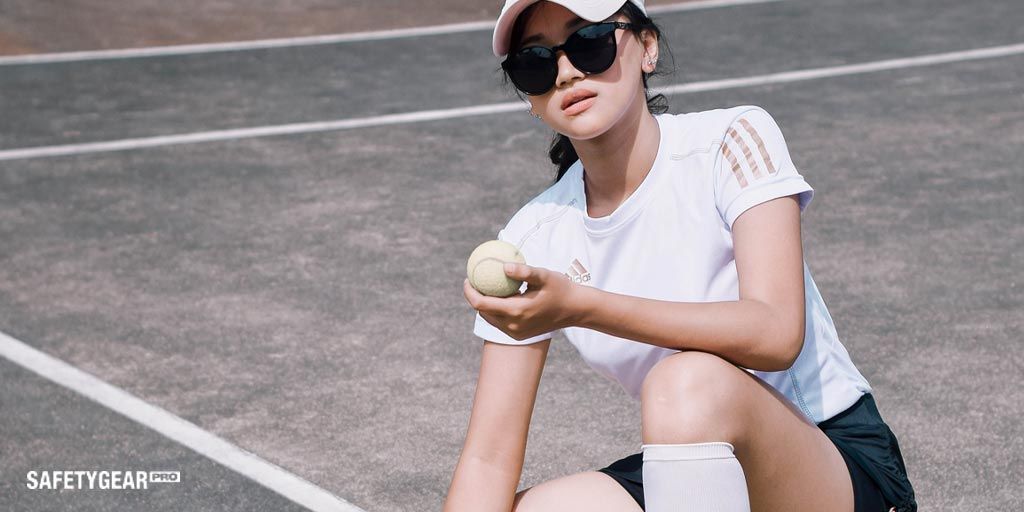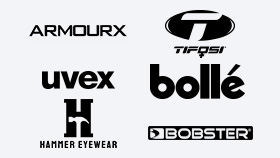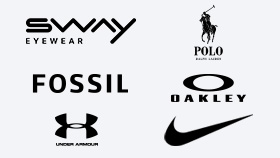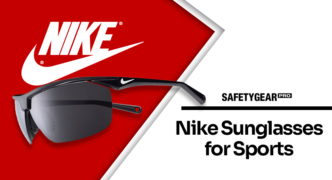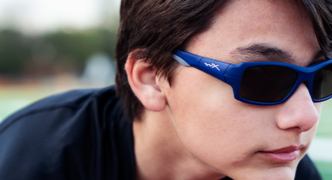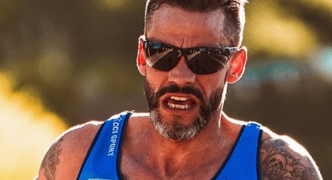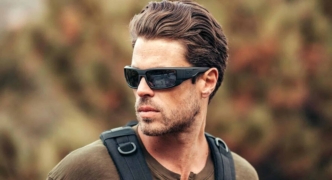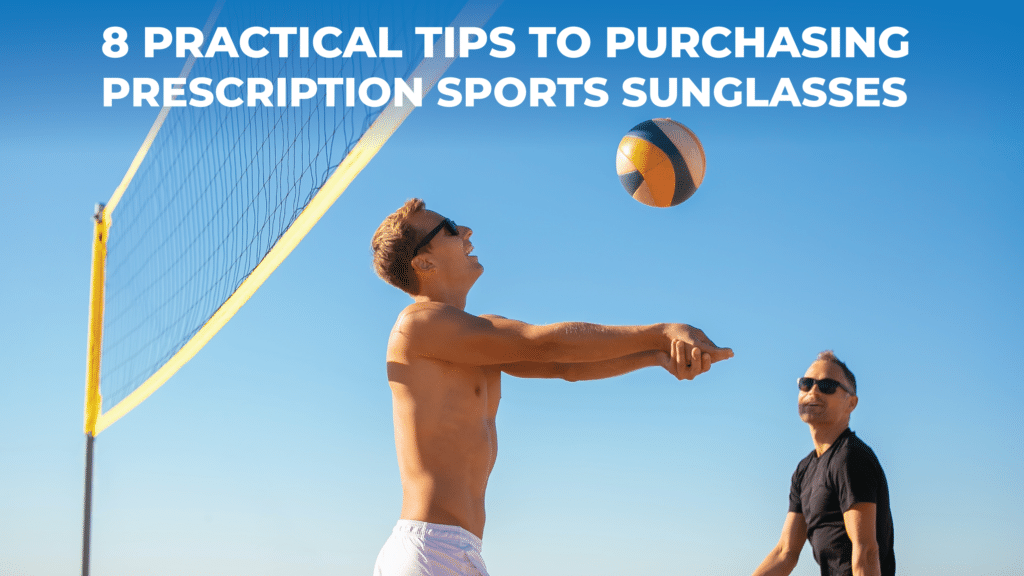
Prescription sunglasses that you plan to wear while playing sports or working out should enhance your vision and protect your eyes. Athletes tend to prefer lightweight eyewear that does not bounce, rub or slip down during movement. Here are eight tips to select prescription sports sunglasses that provide comfort, protection and vision correction.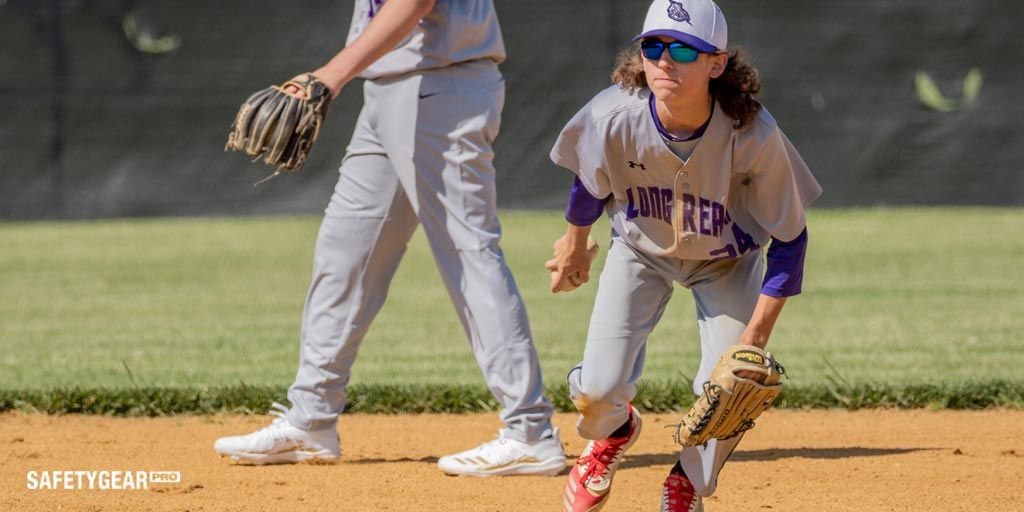
1. Look for Lightweight Frames and Lenses
Active sunglasses often feature lighter materials than casual or lifestyle eyewear. An innovative thermoplastic polymer such as Grilamid TR90 is more durable and weighs less than acetate and other plastics. Polycarbonate frames are also a popular option for impact resistance.
Many impact-rated sport sunglasses also have lenses that are made of polycarbonate. This shatter-resistant plastic is lighter than glass and less brittle and likely to develop scratches than high index lenses.
2. Choose Comfortable Frames That Stay In Place
Most sunglasses are designed for men or women. Men’s frames tend to be larger than women’s frames. In addition to frame width, you should account for the width of the bridge and lenses, lens height and temple arm length.
The materials and design of frames will determine how comfortable eyewear will prove to be during activewear. Lightweight sunglasses that have hydrophilic nose pads or adjustable temples may be ideal for activewear.

3. Get Sunglasses Rated for Sports Safety
ASTM International publishes safety specifications for sports eyewear. Look for sunglasses that meet the most relevant ASTM standard. The ASTM F803 specification covers eye protectors for baseball, basketball, racket sports and soccer.
Other specifications apply to other sports. Basic or high levels of impact protection as rated by the American National Standards Institute Z87.1 standard can be sufficient for many active applications.
4. Match Lens Tint To Activity
Lens tints affect color accuracy in addition to visual contrast, clarity and depth perception. Light levels in locations where you play sports or work out will determine the best sunglasses lens shades. You may also want to factor in the color of equipment such as a ball or distance markers.
The most popular lens tints for sports are gray lenses for versatile color accuracy, brown lenses for sharp contrast in variable light and yellow lenses for low-visibility environments. Green or blue tints enhance acuity and minimize glare.
5. Consider Upgrading Sunglasses Lenses
Beyond prescription strength and tint, several upgrades can improve the performance of sport sunglasses. Digital lens surfacing provides more definition and you can also select lenses that have anti-fog or scratch-resistant coatings.
Polarized and mirrored sunglasses increase comfort and reduce eye fatigue caused by glare. If you participate in activities on open water, snow or road surfaces, you may prefer eyewear that blocks blinding flashes of horizontally reflected light.
6. Customize Prescription Sports Sunglasses
Prescription lenses are available in a wide range of strengths, though some sunglasses can only accommodate a limited selection of lens powers. Check to see whether your favorite frames specify compatible sphere and cylinder measurements or total prescription powers.
Enter your prescription measurements and choose from corrective options such as single vision, multifocal or progressive lenses. Options for digital surfacing, light-adjusting lenses or a choice of tints and treatments are also available for active sunglasses.
7. Prioritize Anti-Fog Lenses and Ventilated Frames
Most active sunglasses-wearers appreciate anti-fog lens treatments. This coating makes lenses less likely to fog up and obscure your vision regardless of temperature and moisture levels. Scratch-resistant coating is also helpful for maintaining the clarity of sunglasses worn during intense activity.
Some sport sunglasses feature ventilation at the bridge or temples to allow air to flow through frames. Sweat buildup can cause frames to slip down or become less comfortable to wear, but these breathable features promote dryness to ensure eyewear remains comfortable and intact.
8. Check Out Frames That Have Hydrophilic Grips
Rubber grips that activate in the presence of sweat or external moisture is another popular feature of performance eyewear. Some brands that design sunglasses for intense activity or water sports use hydrophilic substances on the nose pads and temples that increase the grip on these contact points as moisture levels rise.
FAQs
How do I pick the best sports sunglasses?
Browse our selection of sunglasses designed for specific sports or consider frames and lenses that are generally made for field, high-impact or water sports. Confirm that any pair of frames you are considering fits your face, meets relevant safety specifications and has any comfort and performance features that you need.
Which safety standards apply to sports eyewear?
Several safety standards are applicable to eyewear worn during athletic activity. The standards body ASTM International releases specifications for certain sports, including the F803 standard that covers a variety of impact sports. Safety eyewear with an ANSI Z87.1 basic or high-impact rating may also be suitable for some sports.
Should I wear sunglasses or goggles during sports?
Glasses with adjustable, bent or straight temples or goggles that are secured with a head strap can provide vision correction and eye protection during active wear. The intensity of activity, risk of impact or need for a sealed fit around the eyes make goggles a safer choice for certain sports.
What are the best lens tints for sports?
The lens tints preferable for sports vary based on light conditions and the surrounding environment. Some tints enhance contrast, depth perception and the appearance of equipment of certain colors. Factor in light intensity, typical surroundings and any significant colors that are associated with an activity to choose a tint color.
Which frame materials are most durable?
Many vision specialists recommend Grilamid TR90 frames for sports eyewear. This thermoplastic material is flexible, lightweight and stronger than acetate. Other types of plastic or metal frames may also be suitable for activities during which you plan to wear prescription sports sunglasses depending on any relevant requirements for impact protection. These practical tips can point you toward the best pair of prescription-ready sunglasses for sports. The design of eyewear and frame, lens and grip materials can contribute toward your overall level of comfort and increase the protection prescription sports glasses provide during any activity.
